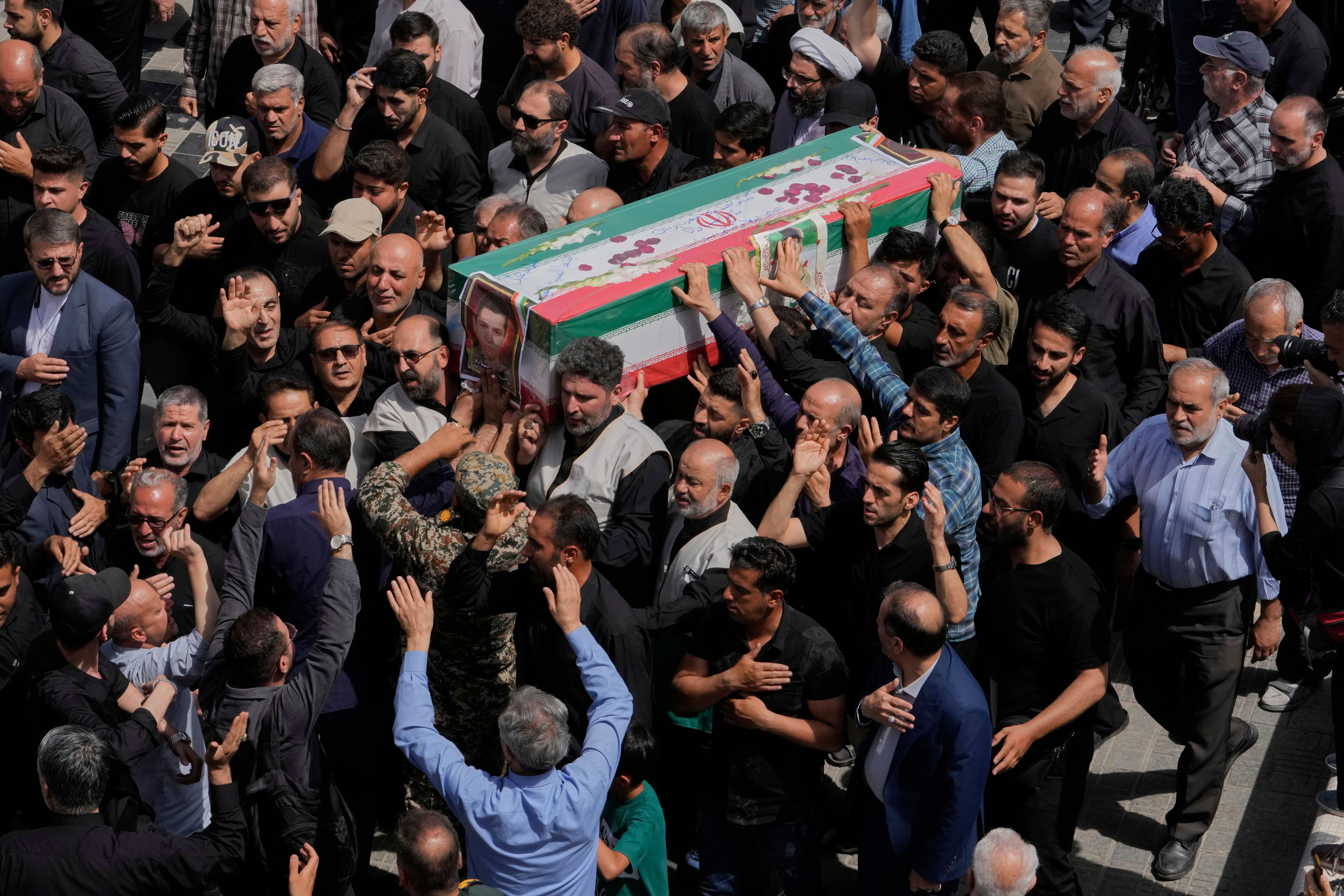Introduction: A Nation Mourning Its Fallen
Iran state funeral ceremonies are currently underway in Tehran to honor approximately 60 martyrs—comprising high-ranking military commanders, nuclear scientists, women, and children—who were killed during the recent 12-day conflict with Israel. The BBC reports that the event drew tens of thousands of mourners chanting slogans and brandishing Iranian flags. BBC News

Who Was Honored in the Ceremony?
- Gen. Hossein Salami – Commander‑in‑Chief of the IRGC, killed on June 13. Wikipedia profile
- Maj. Gen. Mohammad Bagheri – Armed Forces Chief of Staff, buried with his wife and daughter.
- Gen. Amir Ali Hajizadeh – Leader of IRGC Aerospace Force, also slain early in the conflict.
- Mohammad Mehdi Tehranchi – Renowned nuclear scientist, laid to rest alongside his wife.
- Plus 30+ other commanders, 4 women, and 4 children involved in the sacrifices.
State media dubbed the procession the “Funeral of the Martyrs of Power.” Funeral prayers began at Enghelab (Revolution) Square and progressed to Azadi (Freedom) Square—11 km apart—with coffins draped in Iranian flags and missiles on display. Reuters confirms attendance by President Masoud Pezeshkian, Foreign Minister Abbas Araghchi, Quds Force head Esmail Qaani, and wounded adviser Ali Shamkhani. Reuters report
Scale and Sentiment: A Show of Unity

Al Jazeera estimates tens of thousands of participants, while the AP notes crowds may have exceeded one million. Mourners chanted “Death to America” and “Death to Israel,” reflecting enduring resentment. Al Jazeera coverage
These public ceremonies echo Iran’s tradition of state martyr funerals, notably following the 2020 assassination of Qasem Soleimani. Such events reinforce national solidarity and regime messaging during crises. Soleimani’s 2020 funeral
Trump’s Threats & Iran’s Diplomatic Response
Former President Donald Trump said he’d “absolutely” consider bombing Iran again if it resumed uranium enrichment, claiming responsibility for saving Khamenei. Iran’s Foreign Minister Araghchi rejected the remarks, describing them as “disrespectful.” The Guardian live coverage
Diplomatic tensions remain high: Iran’s Foreign Ministry emphasized that military strikes cannot replace negotiations, matching pleas from the IAEA’s Rafael Grossi. He warned that addressing Iran’s nuclear ambitions requires political agreements, not just bombs. Financial Times analysis
Unknowns: Nuclear Damage and Leadership Absence
Reports conflict over the extent of damage to Iran’s nuclear facilities (Fordow, Natanz, Isfahan). The IAEA has not yet confirmed losses in uranium stocks or centrifuges. Tehran asserts the strikes had “no significant impact.” Trump’s threats amplify uncertainty. FT on nuclear uncertainty

Supreme Leader Ayatollah Khamenei did not attend the procession—his absence aligns with his recent radio statements claiming victory. This continues his cautious public profile since the conflict began. Al Jazeera on Khamenei’s message
What It Means for the Region
- Domestic Unity: The funeral reinforces national solidarity and anti‑U.S./Israel sentiment.
- Diplomatic Pressure: Iran and the US remain locked in a rhetorical standoff, complicating nuclear talks.
- Global Watch: The world is closely monitoring how nuclear infrastructure was affected and what diplomatic channels remain open.
Conclusion: A Funeral with Ripples
The Iran state funeral is more than mourning—it’s a strategic statement of unity, defiance, and political resolve. While the immediate conflict may be paused, global eyes remain on Tehran’s nuclear capacity, leadership stability, and the US–Iran diplomatic balance.
For comprehensive coverage and geopolitical analysis, read more on The Morning News Informer. Explore updates from the BBC here.









